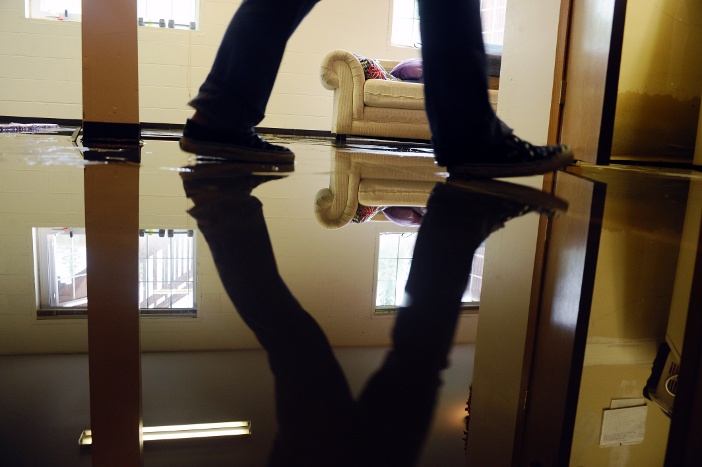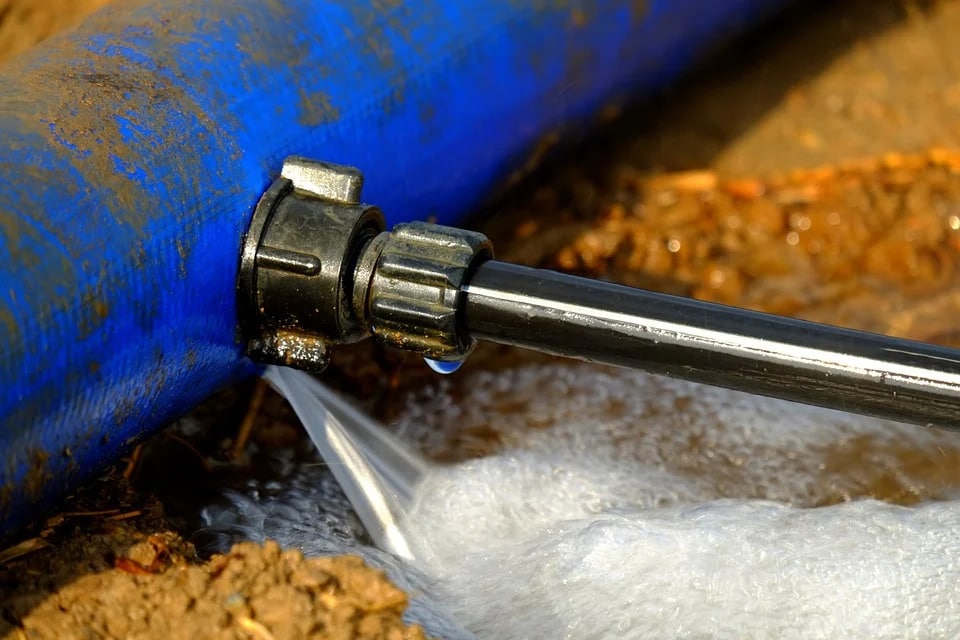Handling Pipe Bursts - Your Step-by-Step Guide to Restoration
Handling Pipe Bursts - Your Step-by-Step Guide to Restoration
Blog Article
They are making a number of great points on the subject of Rules For Handling Water Damage as a whole in this article below.

What should you do if a water pipeline bursts in your home? The longer you wait, the much more extreme the damage that can happen to your building. For these factors, you require to learn how to act in the occasion of a burst water pipeline.
Shut Off the Main Waterline Shutoff
The first thing to do? Shut the shut-off shutoff. Seek the regional shut-off valve to turn off the water in one details location just. Go for the main water line shutoff and also turn it off if you don't recognize where the localized shut-off valve is. This action will remove the water immediately in your entire house. Generally, the primary valve is discovered outside the home beside the water meter. If it's not there, you can also discover it in two places: in the cellar at eye level or the first flooring on the ground. Normally, building contractors put the shut-off valve in the main ground degree washroom or ideal beside it.
Call Water Damages Restoration Pros for Help
After shutting the water resource, call the specialists for aid. This scenario is not something you can do some do it yourself since the pipes needed to be fixed and also there is a demand to attend to the other problems to your residential or commercial property. If you can not deal, seek aid from a trusted business providing 24/7 emergency services. With their specialist help, you can protect against much bigger water damage including deformed baseboards, loosened floor tiles, or damaged frameworks. Do not take this problem gently and also seek expert advice for your complete peace of mind and a reputable service.
Record the Damage For Insurance
While you're waiting for the pros to show up, obtain some documentation of the damage triggered by the wayward pipe. Do close-up shots of the damaged areas as well as prized possessions.
Recover Things That Can Be Saved
Examine the harmed items and also take out the most crucial ones from the pile as soon as you're done taking images. Dry them off in a dry/warm place far from the broken area as well as try to protect them as long as you can. Drag as much wetness as you can to the product so it can begin to dry.
Beginning the Drying Process
You need to begin the drying procedure immediately. Luckily, the water from your waterlines is already tidy so you don't need to worry about sewage system water. The moving water might have disturbed the dust and also debris in your floorboards and rugs. In this instance, put some handwear covers on as well as start some damage control. Use containers to unload out the water. Remove as much water as you can from the surface areas with old towels. Switch on an electrical fan or open your home windows to promote air blood circulation. These steps will accelerate to completely dry and also hinder mold and mildew and also mold growth.
Professionals are the only individuals qualified to analyze properly and fix the burs pipelines and also subsequent damage. As constantly, pipelines don't simply instantly break out of the blue. They usually provide silent warnings like bubbling paint, water spots. Weird sounds in the plumbing, caving ceiling, musty odor, or peeling wallpaper. Make note of these signs as well as do some preventive measures so you can nip any type of problems in the bud.
What should you do if a water pipeline ruptureds in your home? For these reasons, you need to find out just how to act in the occasion of a burst water pipeline. After closing the water source, call the professionals for aid. With their specialist assistance, you can prevent a lot larger water damages consisting of warped walls, loosened floor tiles, or harmed frameworks. Fortunately, the water from your waterlines is already clean so you don't have to worry about sewer water.
How to Handle a Burst Pipe and Minimize Damage
Steps to Take Ahead of Time
If you own property in an area that experiences cold weather, you need to be aware of seasonal maintenance tasks that will help you protect your property as the weather changes each year. One of the most important steps is to winterize your pipes to ensure they won't freeze or burst when the temperature drops. This includes action items like insulating any exposed pipes, detaching garden hoses and covering outdoor faucets. If the weather gets cold enough, you may even consider leaving a faucet dripping or opening cabinet doors during the coldest parts of the day.
No matter how prepared you might be, accidents and emergencies still happen. You'd be wise to set up a savings account specifically for your property so you have a "rainy day" fund set aside for unexpected expenses. All homes regardless of age, location or condition will inevitably need some form of emergency repair.
Steps to Take for Frozen Pipes
A frozen pipe will not necessarily burst, so if you can catch a frozen pipe early on, you could save yourself a major headache. When your area experiences frigid temperatures, be sure to check your plumbing and keep an eye out for warning signs like faucets only releasing small amounts of water or toilets not refilling when flushed. If you do run into one of these issues, you're likely dealing with a frozen pipe.
If this happens, your first step should be to cut off the water supply to that section of the plumbing. Expanding and freezing water can quickly cause damage. Even if the water supply is shut off, you will likely still deal with some leaking from the water that defrosts after the pipe has thawed. Be prepared with a mop, bucket and/or towels to quickly soak up any excess water.
In order to thaw a frozen pipe, you can use a space heater, infrared or incandescent heat lamp, or even a hairdryer to warm up the frozen area. Heat tape is also an option and should be used according to manufacturer instructions. Do not use any sort of open flame to thaw frozen pipes, as it poses a major fire hazard and can damage your pipes further.
Steps to Take for a Burst Pipe
Water damage claims are the second most common insurance claim in the U.S. When you're dealing with a frozen pipe, the water continues to expand as it freezes, which creates pressure that can cause a pipe to burst. When this happens, the crack or leak in the pipe allows water flow from the pipe to enter your home where it shouldn't. If a pipe does burst, you need to act quickly to mitigate property damage and repair cost.
Your very first step should be to shut off your main water supply to minimize flooding typically the most expensive damage to address. Once you've shut off the water supply, make sure you identify the entire area that has been impacted by the leak. Remove as much water as possible as quickly as possible using a mop, sponges, towels or a shop vacuum or wet/dry vacuum. To prevent long-term damage due to moisture build-up, run a dehumidifier or fan in the affected area. Contact a licensed plumber to ensure the pipe is correctly repaired before running any water to that section of the home again. Burst pipes and the associated water damage are something you absolutely want to avoid as a property owner. If you've had to learn your lesson the hard way, don't let yourself get caught in a similar situation during the next spell of cold weather. The best way to deal with frozen or burst pipes is to prevent them in the first place proactive winter maintenance will save you time, money and a whole lot of stress.

We were brought to that article on Water Damage Restoration Do s And Don t from someone on a different site. Do you know somebody else who is curious about the niche? Please feel free to promote it. I recognize the value of reading our article about The Do s And Don ts After Water Damage.
Timely fixes available. Report this page